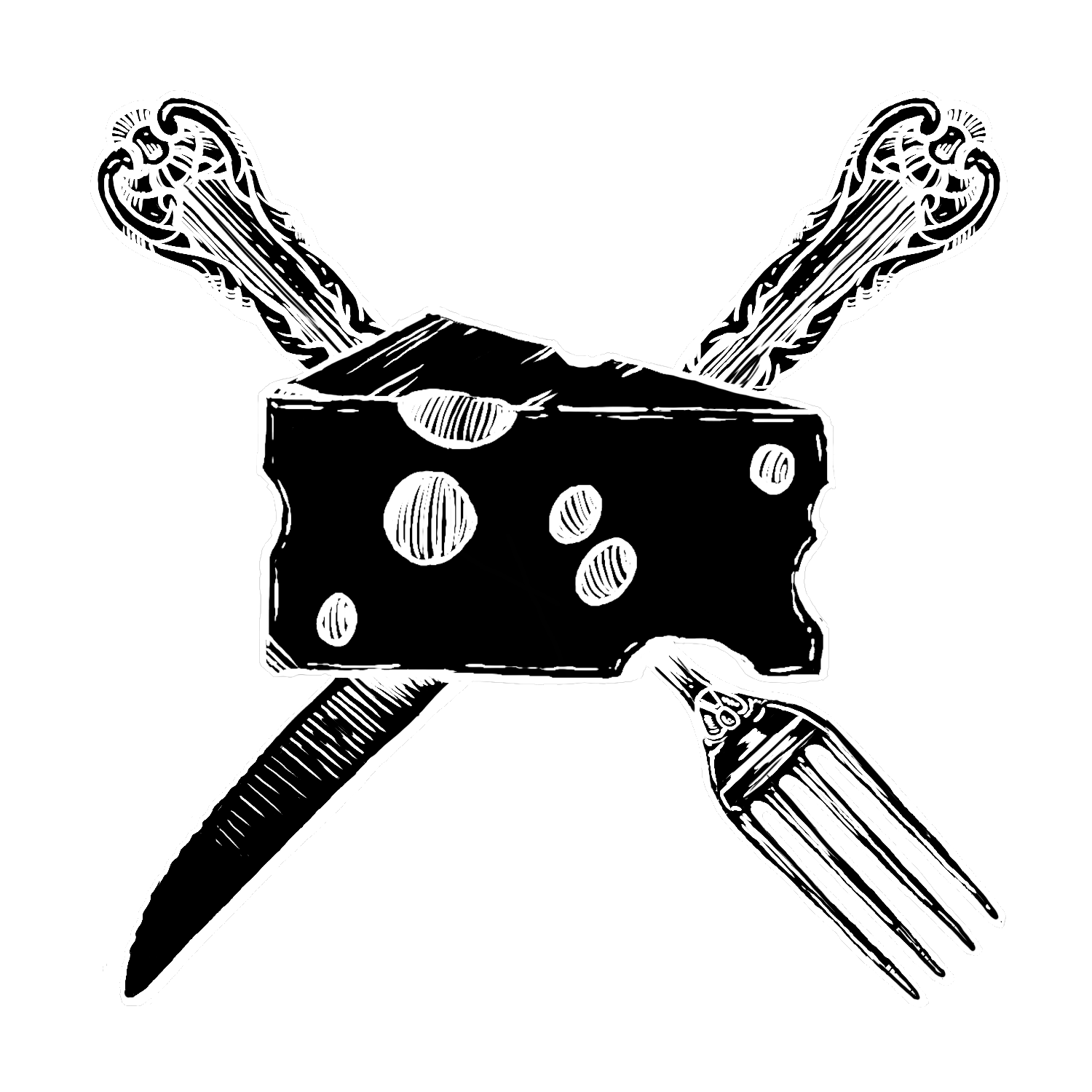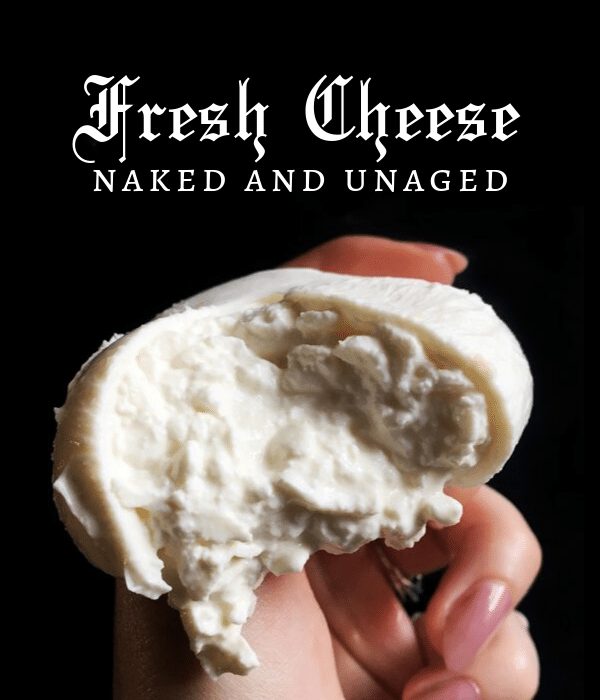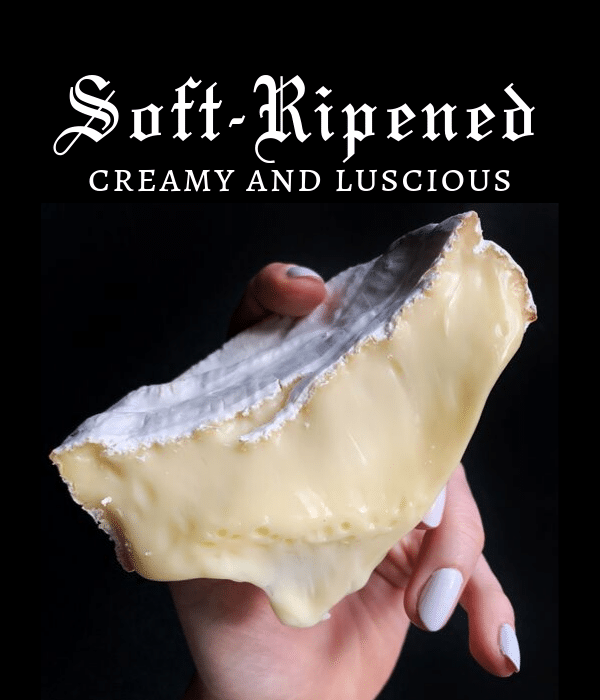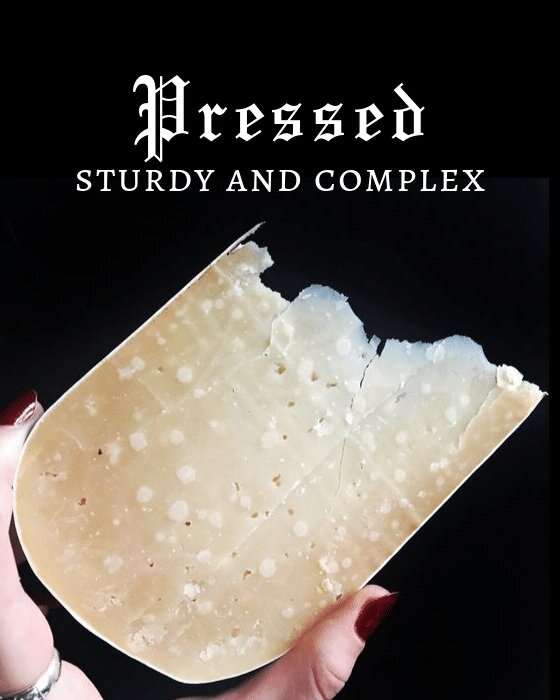The 5 Types of Cheese Everyone Needs to Know
Nearly any cheese fits into these 5 simple categories: fresh, soft-ripened, washed-rind, pressed, and blue. If you learn the differences between these types, you’ll be able to accurately describe and identify almost any cheese. You’ll also have some idea of how they’ll taste, and what you should pair with them. There is a lot of variance within these oversimplified categories, but this is a nice reference point for navigating the sexy but unfamiliar world of cheese. I recommend that you get to know these cheese types intimately by making yourself a platter with a cheese from each category and tasting them one by one.
1.Fresh Cheese
Fresh cheeses aren’t aged so they don’t develop a rind. They’re soft, mild, and have a short shelf-life.
Looks: white and naked
Feels: soft, spreadable, squishy, and/or crumbly
Smells: bright, briny, and/or milky
Tastes: fresh, creamy, and tangy
Examples: Fresh Chèvre, Feta, Mozzarella
Accompaniments: olives, pickled peppers, basil pesto, olive oil, fresh fruit, honey, and bread
Beverage Pairings: Sauvignon-Blanc, wheat beer, rosé, and sparkling cocktails
2.Soft-ripened Cheese
These cheeses are young with white, downy or velvet-y rinds. Let them ripen, and they’ll get nice and gooey.
Looks: snowy or ashy rind with soft inside
Feels: soft and oozy or dense and cakey
Smells: earthy, briny, and/or buttery
Tastes: creamy, vegetal, and/or mushroom-y
Examples: Brie, Humboldt Fog, Camembert
Accompaniments: garlic, prosciutto, fresh fruit, preserves, honey, crackers, bread
Beverage Pairings: sparkling wine, farmhouse ales, green tea, cider
3.Washed Rind
If you see a rusty orange rind, expect some stank. These cheeses are ripened with bacteria and can get real funky.
Looks: orange, pink, or redish
Feels: oozy or pudgy with a sticky rind
Smells: pungent, barn-y, and/or onion-y
Tastes: savory, broth-y and beefy
Examples: Époisse, Limburger, Rush Creek Reserve
Accompaniments: pickles, mustard, bacon, salami, prosciutto, fresh fruit, preserves, honey, crackers, bread
Beverage Pairings: Riesling, Belgians, cider, coffee, whiskey cocktails
4.Pressed Cheese
By far the most variant of the categories, pressed cheeses include anything firm and aged and have deep, complex flavors.
Looks: firm and sturdy, ranging from white to orange
Feels: pliable, crumbly, and/or crunchy
Smells: gently sweet, nutty, savory, and/or musty
Tastes: complex and nuanced
Examples: Gouda, Cheddar, Parmigiano-Reggiano
Accompaniments: pickles, mustard, salami, prosciutto, caramelized onions, fresh fruit, preserves, honey, aged nuts
Beverage Pairings: Champagne, pinot noir, amber ales, cider, whiskey cocktails
5.Blue Cheese
The most polarizing of the cheese types: you’re either a lover or a hater. Blues are always extra salty and they pair well with sweet accompaniments.
Looks: ivory with streaks or pockets of blue, gray, or green
Feels: creamy, crumbly or fudge-like
Smells: strong, barn-y, and/or even astringent
Tastes: savory, salty, creamy, and/or piquant
Examples: Roquefort, Stilton, Gorgonzola
Accompaniments: onions, steak, bacon, preserves, honey, aged nuts, dark chocolate, crackers, bread
Beverage Pairings: port wine, stout, Belgians, coffee, whiskey cocktails
NOW, LET’S PUT EACH OF THESE TO USE!
17 SEXY WAYS TO EAT FRESH GOAT CHEESE
HOW TO MAKE A PERFECT CHEESE PLATE
THE BEST BLUE CHEESE PAIRINGS





